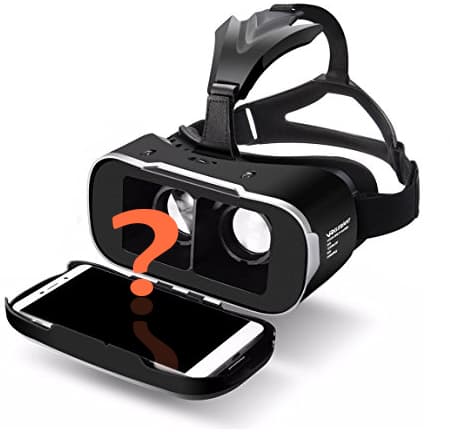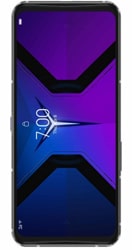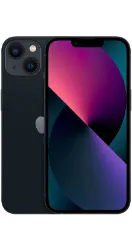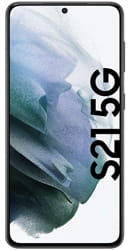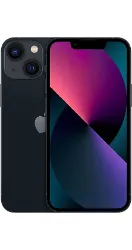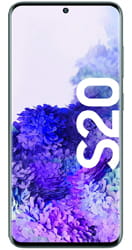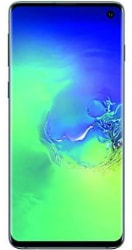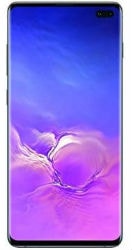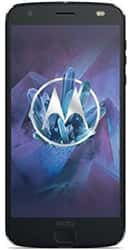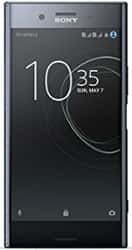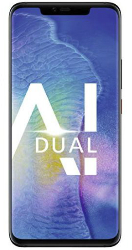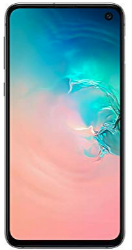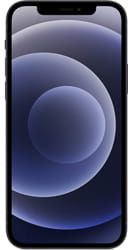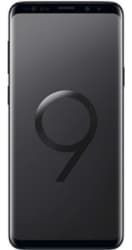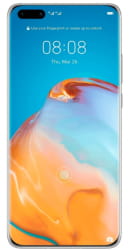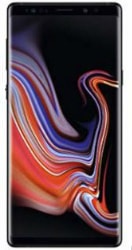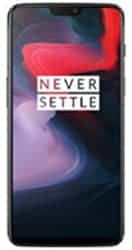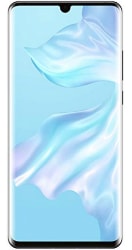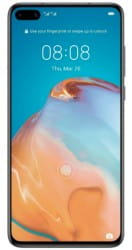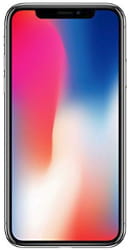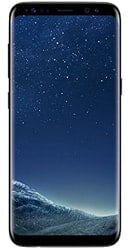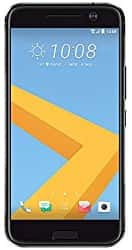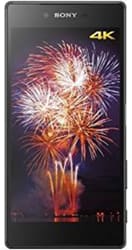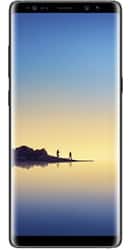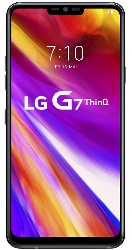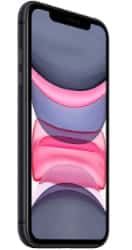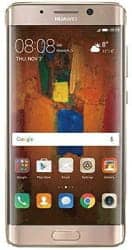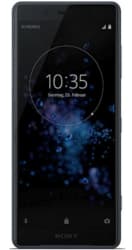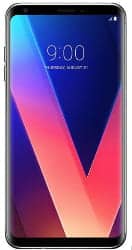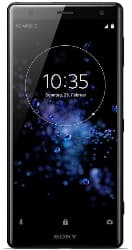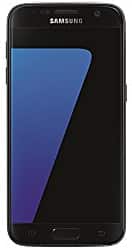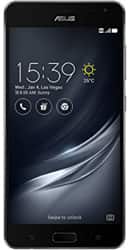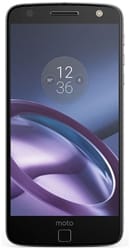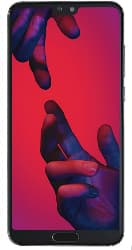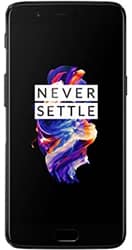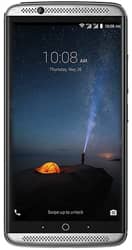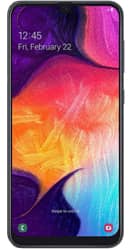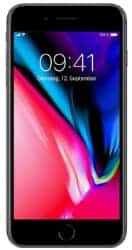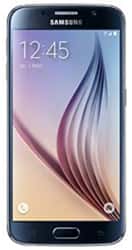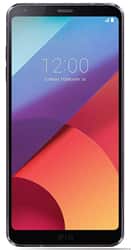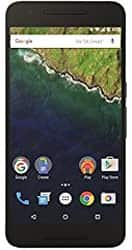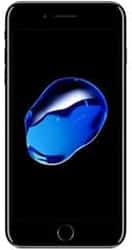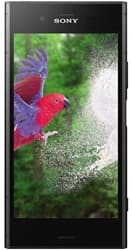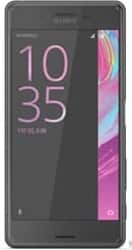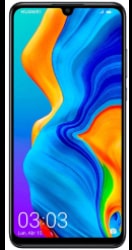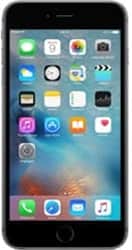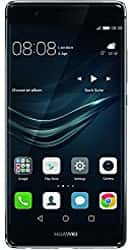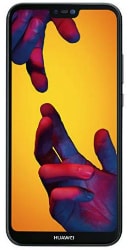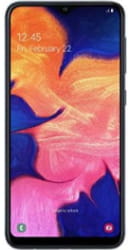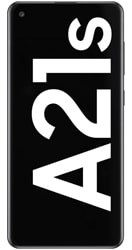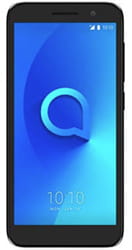Which VR smartphones are best for virtual reality?
“VR smartphones” don’t actually exist in this sense (except for the Daydream generation of the time, you can find out more below). “VR-suitable smartphones” means smartphones that are very well suited for VR glasses due to their specifications (size, display resolution, display technology). In order to enjoy the ultimate VR experience, the right display size and a high pixel density are the most important criteria. The higher the pixel density, the sharper the image and therefore the better the display.
In addition, of course, there is also how powerful or “fast” the smartphone is, otherwise, for example, graphically complex games could start to stutter.
ATTENTION: These are the best mobile phones for VR glasses suitable for the “Google Cardboard” generation.
If you want to use Google Daydream, you must own one of these smartphones: Daydream-Ready Smartphones. Unfortunately, Google Daydream is no longer supported.
You can find VR glasses for smartphones here: VR glasses charts
Basically, anything over 5 inches and 500 ppi on VR smartphones currently provides great VR experiences with Google Cardboard.
1. Lenovo Legion Phone Duel 2
Display
6.92 ''
Pixel Density
388 ppi
Relativized ⓘⓘ Pixel Density relativized to 6 inch for better comparison
448 ppi
Display Technology
AMOLED
Weight
259 g
Resolution
1080 x 2459 px
Released
2021-05
2. Apple iPhone 13
Display
6.1 ''
Pixel Density
457 ppi
Relativized ⓘⓘ Pixel Density relativized to 6 inch for better comparison
465 ppi
Display Technology
OLED
Weight
174 g
Resolution
1170 x 2532 px
Released
2021-09
3. Samsung Galaxy S21 5G
Display
6.2 ''
Pixel Density
424 ppi
Relativized ⓘⓘ Pixel Density relativized to 6 inch for better comparison
439 ppi
Display Technology
AMOLED
Weight
169 g
Resolution
1080 x 2400 px
Released
2021-01
4. Apple iPhone 13 Mini
Display
5.4 ''
Pixel Density
477 ppi
Relativized ⓘⓘ Pixel Density relativized to 6 inch for better comparison
430 ppi
Display Technology
OLED
Weight
141 g
Resolution
1080 x 2340 px
Released
2021-09
5. Samsung Galaxy S20
Display
6.2 ''
Pixel Density
566 ppi
Relativized ⓘⓘ Pixel Density relativized to 6 inch for better comparison
585 ppi
Display Technology
AMOLED
Weight
162.9 g
Resolution
1440 x 3200 px
Released
2020-02
6. Samsung Galaxy S10
Display
6.1 ''
Pixel Density
551 ppi
Relativized ⓘⓘ Pixel Density relativized to 6 inch for better comparison
561 ppi
Display Technology
Super AMOLED
Weight
157 g
Resolution
1440 x 3040 px
Released
2019-02
7. Samsung Galaxy S10+ (Plus)
Display
6.4 ''
Pixel Density
525 ppi
Relativized ⓘⓘ Pixel Density relativized to 6 inch for better comparison
560 ppi
Display Technology
Super AMOLED
Weight
175 g
Resolution
1440 x 3039 px
Released
2019-03
8. Lenovo Moto Z2 Force
Display
5.5 ''
Pixel Density
534 ppi
Relativized ⓘⓘ Pixel Density relativized to 6 inch for better comparison
490 ppi
Display Technology
AMOLED
Weight
143 g
Resolution
1440 x 2560 px
Released
2017-07
9. Google Pixel 3 XL
Display
6.3 ''
Pixel Density
522 ppi
Relativized ⓘⓘ Pixel Density relativized to 6 inch for better comparison
549 ppi
Display Technology
AMOLED
Weight
184 g
Resolution
1440 x 2960 px
Released
2018-11
10. Sony Xperia XZ Premium
Display
5.46 ''
Pixel Density
807 ppi
Relativized ⓘⓘ Pixel Density relativized to 6 inch for better comparison
734 ppi
Display Technology
IPS LCD
Weight
195 g
Resolution
3840 x 2160 px
Released
2017-06
11. Huawei Mate 20 Pro
Display
6.39 ''
Pixel Density
538 ppi
Relativized ⓘⓘ Pixel Density relativized to 6 inch for better comparison
573 ppi
Display Technology
AMOLED
Weight
189 g
Resolution
1440 x 3120 px
Released
2018-11
12. Samsung Galaxy S10e
Display
5.8 ''
Pixel Density
435 ppi
Relativized ⓘⓘ Pixel Density relativized to 6 inch for better comparison
420 ppi
Display Technology
AMOLED
Weight
150 g
Resolution
1080 x 2280 px
Released
2019-03
13. Apple iPhone 12
Display
6.1 ''
Pixel Density
457 ppi
Relativized ⓘⓘ Pixel Density relativized to 6 inch for better comparison
465 ppi
Display Technology
AMOLED
Weight
164 g
Resolution
1170 x 2532 px
Released
2020-10
14. Samsung Galaxy S9
Display
5.8 ''
Pixel Density
568 ppi
Relativized ⓘⓘ Pixel Density relativized to 6 inch for better comparison
549 ppi
Display Technology
Super AMOLED
Weight
163 g
Resolution
1440 x 2960 px
Released
2018-03
15. Google Pixel 3
Display
5.5 ''
Pixel Density
439 ppi
Relativized ⓘⓘ Pixel Density relativized to 6 inch for better comparison
402 ppi
Display Technology
AMOLED
Weight
148 g
Resolution
1080 x 2160 px
Released
2018-11
16. Samsung Galaxy S9+
Display
6.2 ''
Pixel Density
531 ppi
Relativized ⓘⓘ Pixel Density relativized to 6 inch for better comparison
549 ppi
Display Technology
Super AMOLED
Weight
189 g
Resolution
1440 x 2960 px
Released
2018-03
17. Huawei P40 Pro
Display
6.58 ''
Pixel Density
433 ppi
Relativized ⓘⓘ Pixel Density relativized to 6 inch for better comparison
475 ppi
Display Technology
AMOLED
Weight
209 g
Resolution
1080 x 2640 px
Released
2020-03
18. Google Pixel 2 XL
Display
6 ''
Pixel Density
537 ppi
Relativized ⓘⓘ Pixel Density relativized to 6 inch for better comparison
537 ppi
Display Technology
AMOLED
Weight
175 g
Resolution
1440 x 2880 px
Released
2017-10
19. Huawei P40 Pro+ (Plus)
Display
6.58 ''
Pixel Density
433 ppi
Relativized ⓘⓘ Pixel Density relativized to 6 inch for better comparison
475 ppi
Display Technology
AMOLED
Weight
226 g
Resolution
1080 x 2640 px
Released
2020-06
20. Samsung Galaxy Note 9
Display
6.4 ''
Pixel Density
514 ppi
Relativized ⓘⓘ Pixel Density relativized to 6 inch for better comparison
549 ppi
Display Technology
AMOLED
Weight
201 g
Resolution
1440 x 2960 px
Released
2018-08
21. OnePlus 6
Display
6.28 ''
Pixel Density
402 ppi
Relativized ⓘⓘ Pixel Density relativized to 6 inch for better comparison
420 ppi
Display Technology
AMOLED
Weight
177 g
Resolution
1080 x 2280 px
Released
2018-05
22. Huawei P30 Pro
Display
6.47 ''
Pixel Density
398 ppi
Relativized ⓘⓘ Pixel Density relativized to 6 inch for better comparison
430 ppi
Display Technology
AMOLED
Weight
192 g
Resolution
1080 x 2340 px
Released
2019-03
23. Huawei P40
Display
6.58 ''
Pixel Density
392 ppi
Relativized ⓘⓘ Pixel Density relativized to 6 inch for better comparison
430 ppi
Display Technology
AMOLED
Weight
175 g
Resolution
1080 x 2340 px
Released
2020-04
24. iPhone X
Display
5.8 ''
Pixel Density
463 ppi
Relativized ⓘⓘ Pixel Density relativized to 6 inch for better comparison
447 ppi
Display Technology
AMOLED
Weight
174 g
Resolution
1125 x 2436 px
Released
2017-10
25. Samsung Galaxy S8
Display
5.8 ''
Pixel Density
568 ppi
Relativized ⓘⓘ Pixel Density relativized to 6 inch for better comparison
549 ppi
Display Technology
Super AMOLED
Weight
155 g
Resolution
1440 x 2960 px
Released
2017-04
26. HTC 10
Display
161 ''
Pixel Density
18 ppi
Relativized ⓘⓘ Pixel Density relativized to 6 inch for better comparison
490 ppi
Display Technology
LCD
Weight
161 g
Resolution
1440 x 2560 px
Released
2016-05
27. Samsung Galaxy S8+
Display
6.2 ''
Pixel Density
531 ppi
Relativized ⓘⓘ Pixel Density relativized to 6 inch for better comparison
549 ppi
Display Technology
Super AMOLED
Weight
173 g
Resolution
1440 x 2960 px
Released
2017-04
28. Sony Xperia Z5 Premium
Display
5.5 ''
Pixel Density
801 ppi
Relativized ⓘⓘ Pixel Density relativized to 6 inch for better comparison
734 ppi
Display Technology
IPS LCD
Weight
180 g
Resolution
2160 x 3840 px
Released
2015-11
29. Samsung Galaxy Note 8
Display
6.3 ''
Pixel Density
522 ppi
Relativized ⓘⓘ Pixel Density relativized to 6 inch for better comparison
549 ppi
Display Technology
Super AMOLED
Weight
195 g
Resolution
1440 x 2960 px
Released
2017-08
30. Google Pixel XL
Display
5.5 ''
Pixel Density
534 ppi
Relativized ⓘⓘ Pixel Density relativized to 6 inch for better comparison
490 ppi
Display Technology
AMOLED
Weight
168 g
Resolution
1440 x 2560 px
Released
2016-10
31. LG G7 ThinQ
Display
6.1 ''
Pixel Density
563 ppi
Relativized ⓘⓘ Pixel Density relativized to 6 inch for better comparison
573 ppi
Display Technology
IPS LCD
Weight
162 g
Resolution
1440 x 3120 px
Released
2018-05
32. Apple iPhone 11
Display
6.1 ''
Pixel Density
324 ppi
Relativized ⓘⓘ Pixel Density relativized to 6 inch for better comparison
329 ppi
Display Technology
LCD
Weight
194 g
Resolution
828 x 1792 px
Released
2019-09
33. Google Pixel 2
Display
5 ''
Pixel Density
441 ppi
Relativized ⓘⓘ Pixel Density relativized to 6 inch for better comparison
367 ppi
Display Technology
AMOLED
Weight
143 g
Resolution
1080 x 1920 px
Released
2017-10
34. Huawei Mate 9 Pro
Display
5.5 ''
Pixel Density
534 ppi
Relativized ⓘⓘ Pixel Density relativized to 6 inch for better comparison
490 ppi
Display Technology
AMOLED
Weight
169 g
Resolution
1440 x 2560 px
Released
2017-11
35. Sony Xperia XZ2 Compact
Display
5 ''
Pixel Density
483 ppi
Relativized ⓘⓘ Pixel Density relativized to 6 inch for better comparison
402 ppi
Display Technology
IPS LCD
Weight
168 g
Resolution
1080 x 2160 px
Released
2018-02
36. LG V30
Display
6 ''
Pixel Density
537 ppi
Relativized ⓘⓘ Pixel Density relativized to 6 inch for better comparison
537 ppi
Display Technology
AMOLED
Weight
158 g
Resolution
1440 x 2880 px
Released
2017-09
37. Sony Xperia XZ2
Display
5.7 ''
Pixel Density
424 ppi
Relativized ⓘⓘ Pixel Density relativized to 6 inch for better comparison
402 ppi
Display Technology
IPS LCD
Weight
198 g
Resolution
1080 x 2160 px
Released
2018-04
38. Samsung Galaxy S7
Display
5.1 ''
Pixel Density
576 ppi
Relativized ⓘⓘ Pixel Density relativized to 6 inch for better comparison
490 ppi
Display Technology
Super AMOLED
Weight
152 g
Resolution
1440 x 2560 px
Released
2016-03
39. ASUS ZenFone AR (ZS571KL)
Display
5.7 ''
Pixel Density
515 ppi
Relativized ⓘⓘ Pixel Density relativized to 6 inch for better comparison
490 ppi
Display Technology
Super AMOLED
Weight
170 g
Resolution
1440 x 2560 px
Released
2017-01
40. Lenovo Moto Z
Display
5.5 ''
Pixel Density
534 ppi
Relativized ⓘⓘ Pixel Density relativized to 6 inch for better comparison
490 ppi
Display Technology
AMOLED
Weight
136 g
Resolution
1440 x 2560 px
Released
2016-09
41. Huawei P20 Pro
Display
6.1 ''
Pixel Density
408 ppi
Relativized ⓘⓘ Pixel Density relativized to 6 inch for better comparison
414 ppi
Display Technology
AMOLED
Weight
180 g
Resolution
1080 x 2240 px
Released
2018-04
42. OnePlus 5
Display
5.5 ''
Pixel Density
401 ppi
Relativized ⓘⓘ Pixel Density relativized to 6 inch for better comparison
367 ppi
Display Technology
AMOLED
Weight
153 g
Resolution
1080 x 1920 px
Released
2017-06
43. ZTE Axon 7
Display
5.5 ''
Pixel Density
534 ppi
Relativized ⓘⓘ Pixel Density relativized to 6 inch for better comparison
490 ppi
Display Technology
AMOLED
Weight
175 g
Resolution
1440 x 2560 px
Released
2016-05
44. Google Pixel
Display
5 ''
Pixel Density
441 ppi
Relativized ⓘⓘ Pixel Density relativized to 6 inch for better comparison
367 ppi
Display Technology
AMOLED
Weight
143 g
Resolution
1080 x 1920 px
Released
2016-10
45. Samsung Galaxy A50
Display
6.4 ''
Pixel Density
403 ppi
Relativized ⓘⓘ Pixel Density relativized to 6 inch for better comparison
430 ppi
Display Technology
AMOLED
Weight
166 g
Resolution
1080 x 2340 px
Released
2019-03
46. Apple iPhone 8 Plus
Display
5.5 ''
Pixel Density
401 ppi
Relativized ⓘⓘ Pixel Density relativized to 6 inch for better comparison
367 ppi
Display Technology
IPS LCD
Weight
202 g
Resolution
1080 x 1920 px
Released
2017-09
47. Samsung Galaxy S6
Display
5.1 ''
Pixel Density
576 ppi
Relativized ⓘⓘ Pixel Density relativized to 6 inch for better comparison
490 ppi
Display Technology
Super AMOLED
Weight
138 g
Resolution
1440 x 2560 px
Released
2015-04
48. LG G6
Display
5.7 ''
Pixel Density
565 ppi
Relativized ⓘⓘ Pixel Density relativized to 6 inch for better comparison
537 ppi
Display Technology
IPS LCD
Weight
163 g
Resolution
1440 x 2880 px
Released
2017-03
49. Apple iPhone 8
Display
4.7 ''
Pixel Density
326 ppi
Relativized ⓘⓘ Pixel Density relativized to 6 inch for better comparison
255 ppi
Display Technology
IPS LCD
Weight
148 g
Resolution
750 x 1334 px
Released
2017-09
50. Google Nexus 6P
Display
5.7 ''
Pixel Density
515 ppi
Relativized ⓘⓘ Pixel Density relativized to 6 inch for better comparison
490 ppi
Display Technology
AMOLED
Weight
178 g
Resolution
1440 x 2560 px
Released
2015-09
51. Apple iPhone 7 Plus
Display
5.5 ''
Pixel Density
401 ppi
Relativized ⓘⓘ Pixel Density relativized to 6 inch for better comparison
367 ppi
Display Technology
IPS LCD
Weight
188 g
Resolution
1080 x 1920 px
Released
2016-09
52. Sony Xperia XZ1
Display
5.2 ''
Pixel Density
424 ppi
Relativized ⓘⓘ Pixel Density relativized to 6 inch for better comparison
367 ppi
Display Technology
IPS LCD
Weight
155 g
Resolution
1080 x 1920 px
Released
2017-07
53. Sony Xperia X Performance
Display
5 ''
Pixel Density
441 ppi
Relativized ⓘⓘ Pixel Density relativized to 6 inch for better comparison
367 ppi
Display Technology
IPS LCD
Weight
164.4 g
Resolution
1080 x 1920 px
Released
2016-06
54. Huawei P30 Lite
Display
6.15 ''
Pixel Density
415 ppi
Relativized ⓘⓘ Pixel Density relativized to 6 inch for better comparison
425 ppi
Display Technology
LCD
Weight
159 g
Resolution
1080 x 2312 px
Released
2019-04
55. Apple iPhone 6s Plus
Display
5.5 ''
Pixel Density
401 ppi
Relativized ⓘⓘ Pixel Density relativized to 6 inch for better comparison
367 ppi
Display Technology
IPS LCD
Weight
172 g
Resolution
1080 x 1920 px
Released
2014-09
56. Huawei P9
Display
5.2 ''
Pixel Density
424 ppi
Relativized ⓘⓘ Pixel Density relativized to 6 inch for better comparison
367 ppi
Display Technology
IPS LCD
Weight
144 g
Resolution
1080 x 1920 px
Released
2016-04
57. Huawei P20 Lite
Display
5.84 ''
Pixel Density
432 ppi
Relativized ⓘⓘ Pixel Density relativized to 6 inch for better comparison
420 ppi
Display Technology
IPS LCD
Weight
145 g
Resolution
1080 x 2280 px
Released
2018-03
58. Samsung Galaxy A10
Display
6.2 ''
Pixel Density
271 ppi
Relativized ⓘⓘ Pixel Density relativized to 6 inch for better comparison
280 ppi
Display Technology
LCD
Weight
168 g
Resolution
720 x 1520 px
Released
2019-03
59. Samsung Galaxy A21s
Display
6.5 ''
Pixel Density
270 ppi
Relativized ⓘⓘ Pixel Density relativized to 6 inch for better comparison
292 ppi
Display Technology
PLS IPS
Weight
192 g
Resolution
720 x 1600 px
Released
2020-05
60. Alcatel 1 5033D
Display
5 ''
Pixel Density
215 ppi
Relativized ⓘⓘ Pixel Density relativized to 6 inch for better comparison
179 ppi
Display Technology
IPS LCD
Weight
134 g
Resolution
480 x 960 px
Released
2018-07
Google Cardboard vs. Google Daydream
At the end of 2016, Google also set a new standard for virtual reality for VR smartphones with the release of Android N and the new Pixel Phone (we reported: Google Virtual Reality – Daydream finally introduced ). Unfortunately, Daydream is no longer being developed. However, it can still be used and there are numerous apps in the Daydream Store.
With Google Daydream, Google had set strict guidelines that are necessary for the use of Daydream. You can find a list of Daydream-compatible smartphones here:Daydream-ready smartphones . Unfortunately, there have been very few smartphones overall.
Another problem is that Daydream only works with certain VR headsets or a Daydream controller. That would be the “Daydream View” sold by Google, or there is, for example, a Daydream version of the “Destek” VR glasses.
Google Cardboard, on the other hand, can be used with any VR glasses (for smartphones) on the market (VR glasses charts), and you can use almost any smartphone, whether it’s too big, too small, too low a resolution, too bad display, etc. It is therefore perfectly suited for beginners in virtual reality. On the other hand, of course, the VR experience is not as good as with Google Daydream or with the HTC Vive, Oculus Quest, Meta Quest 2, Playstation VR, Oculus Rift or Valve Index.
What is the pixel density in VR smartphones? what are ppi?
The pixel density or “point density” (in English: ppi = “pixel per inch”) results from the ratio of the display resolution and display size. If a smartphone has a high resolution and a small display, many pixels are displayed in a small space. This results in a sharper image. If a smartphone has a low resolution and a large display, fewer pixels are displayed in a larger space. This leads to a “pixelated” image, i.e. a blurred image.
If you want to know more about pixel density, you can find out more here: VR glasses resolution
In the list of smartphones above, under “Pixel density” you can see which smartphones currently have the highest pixel density. This has an enormous effect on the VR experience, as you can look very closely at the display through the VR headset. At the same time, you have to calculate the pixel density by 2 in virtual reality, since a separate image is displayed for each eye. A high pixel density is therefore essential.
Where can I find VR apps for VR smartphones?
After you want to dive into the new virtual world with a suitable smartphone and VR headset, you might ask yourself: “Which apps do I need now?”.
We have made a list of our favorites here: These VR APPS should not be missing on your VR smartphone
Does your VR headset don’t have a magnetic switch?
This is the question VR beginners ask themselves when they suddenly have to “click” in an app. You may be able to use a bluetooth mouse here, or our walkaround (retrofit magnetic switch) .
Even so, the good old remote control is still the best solution: VR glasses remote control

